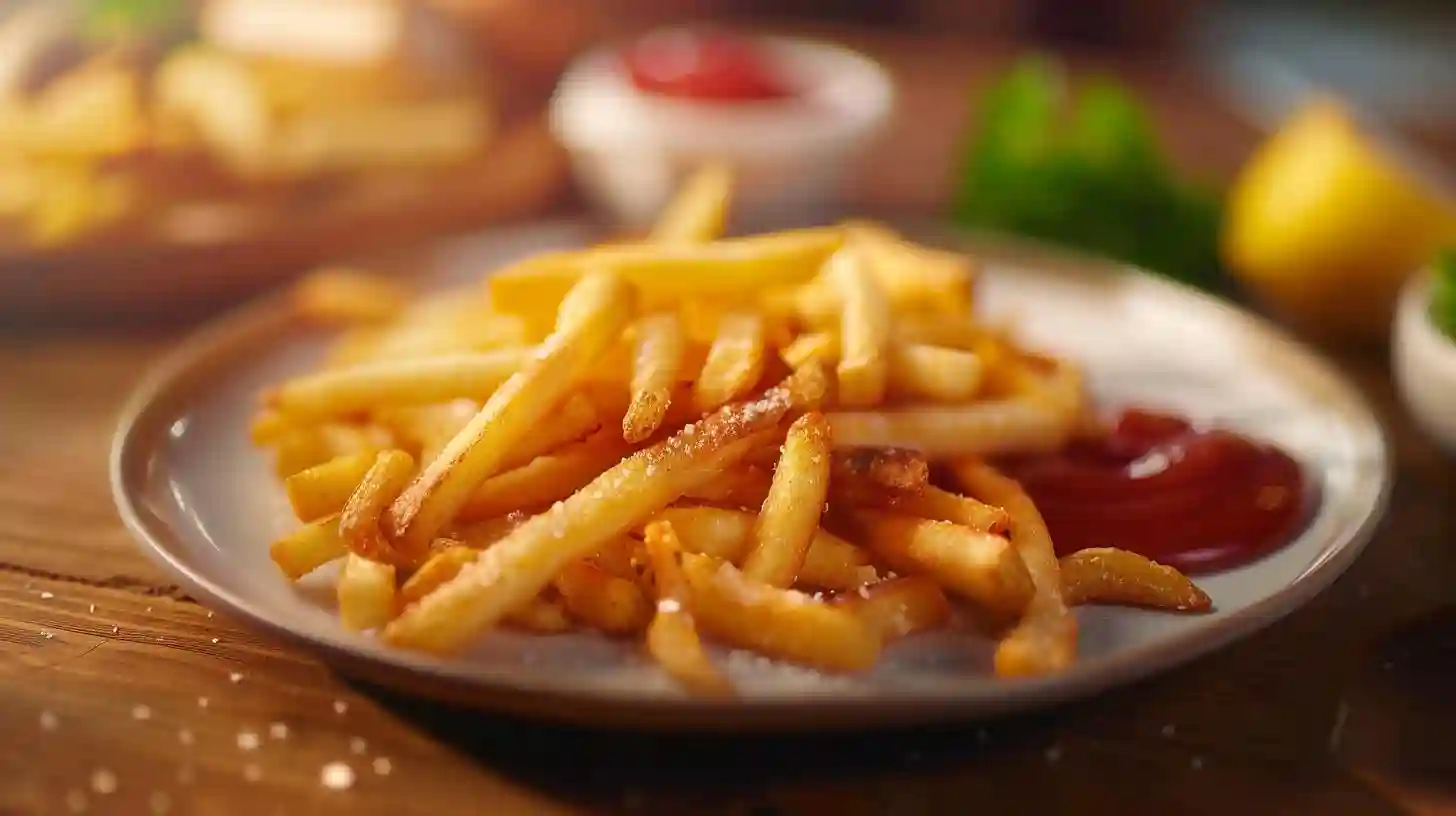
Knowledgetrovehq

Frying delicious fries is an art that combines science, culinary skills, and a touch of personal flair. While it may seem like a straightforward task, creating the perfect fry can be an intricate process involving careful selection of ingredients, precise cooking techniques, and a good understanding of the desired outcome. The result, when done correctly, is a batch of fries that is crispy on the outside, tender on the inside, and bursting with flavor.
For starters, the choice of potato is critical. Not all potatoes are created equal, and selecting the right type can significantly impact the taste and texture of your fries. Russet potatoes, also known as Idaho potatoes, are the ideal choice for frying due to their high starch content and low moisture level. These characteristics make them perfect for achieving that desirable crunchy exterior and fluffy interior. Once you've selected your potatoes, the next step is to prepare them correctly. Begin by washing and peeling the potatoes, although leaving the skin on is an option for those who prefer a more rustic fry. After peeling, cut the potatoes into uniform strips. Consistency in size ensures even cooking, which is essential for avoiding fries that are burnt on the outside and undercooked on the inside.
After cutting, soaking the potato strips in cold water is a crucial step that can make a significant difference. The purpose of soaking is to remove excess starch from the surface of the potatoes, which helps in achieving a crispier fry. For optimal results, soak the potatoes for at least 30 minutes to an hour. Some even prefer soaking them overnight for an extra level of crispiness. Once the soaking period is complete, drain the potatoes and pat them dry with a clean kitchen towel or paper towels. Removing as much moisture as possible before frying is essential for preventing oil splatter and achieving an even, golden crust.
With the potatoes prepped, the focus shifts to the frying process. The type of oil used can influence flavor and fry quality. Oils with a high smoke point, such as canola, peanut, or vegetable oil, are ideal for deep frying because they can withstand the high temperatures required without burning or adding any undesirable flavors. Using a deep fryer or a heavy-bottomed pot, heat the oil to around 325°F (160°C). Having a kitchen thermometer can be very helpful for maintaining the correct temperature, as oil that's too hot or too cold will affect the final product. Frying the potatoes in two stages is a technique often employed by chefs to achieve the perfect fry. The first stage, known as "blanching," involves frying the potatoes at a lower temperature to cook the interior without browning the exterior. This step usually lasts for about 4 to 5 minutes.
Once the blanching stage is complete, remove the fries from the oil and let them cool. Some chefs recommend refrigerating the fries briefly to help set the initial cook. This cooling period contributes to the final texture, ensuring the inside stays soft while the exterior turns crispy in the next frying step. The second stage involves increasing the oil temperature to around 375°F (190°C). Fry the cooled potatoes until they turn golden brown and crispy. This phase usually takes 2 to 3 minutes, but keep a close eye on the fries to prevent overcooking. Once they reach the desired color, remove them from the oil and place them on paper towels to drain any excess grease.
One of the last, yet most vital, steps is seasoning the fries immediately after removing them from the oil. Salt is the traditional seasoning choice, but this is where personal creativity can shine. Adding spices like garlic powder, paprika, or even truffle salt can elevate the flavor profile and offer a gourmet twist. Fresh herbs such as rosemary or thyme can also be tossed with the fries for an aromatic enhancement. Serving fries hot is essential for the best flavor and texture. Accompaniments like ketchup, mayonnaise, aioli, or even vinegar can add another layer of taste and make the eating experience even more enjoyable. Each condiment offers a unique complement to the fry's natural flavor, providing a varied taste experience in each bite.
While frying fries may seem like a culinary basic, the path to perfection is paved with careful choices and meticulous technique. Start with quality russet potatoes and take the time to cut them into uniform sizes. Soaking the cut potatoes removes excess starch and helps in achieving a crispier outcome. Using the right oil and maintaining the correct temperature are crucial steps that can't be overlooked. Frying in two stages — blanching at a lower temperature and then frying at a higher temperature — sets the texture just right. Immediate seasoning ensures that the fries are flavored to your liking. Whether enjoyed as a side dish or a snack, perfectly fried fries are a testament to the cook's attention to detail and understanding of the ingredients. The satisfaction derived from biting into a well-fried fry, with its perfect balance of crispy exterior and soft interior, is well worth the effort.